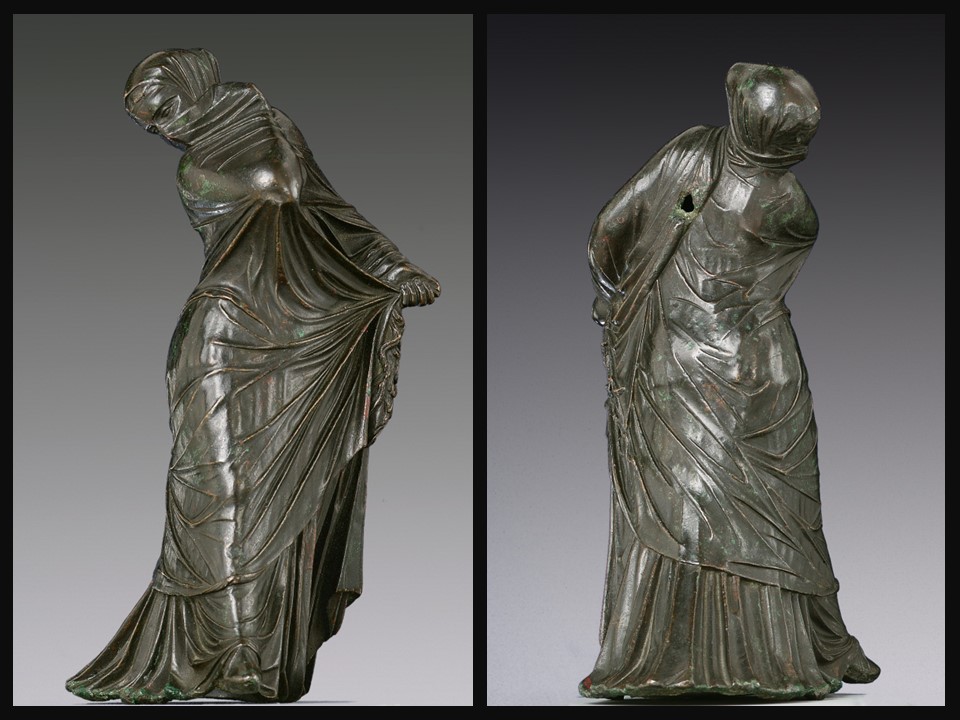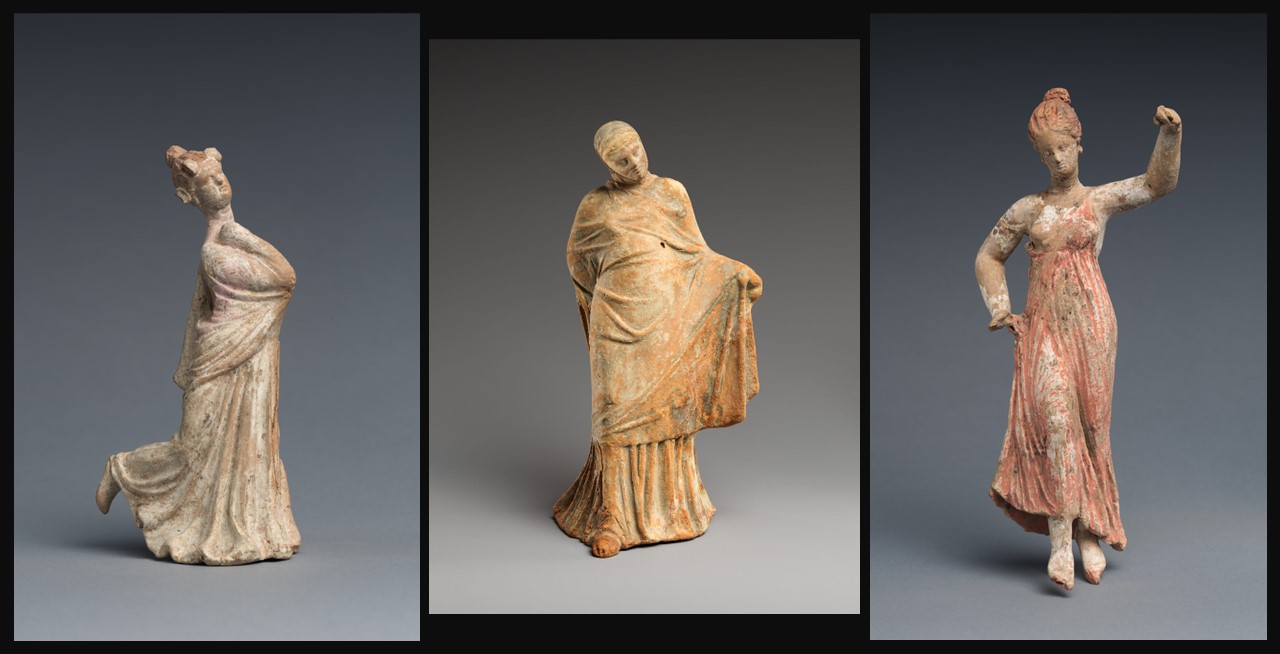
Dance is an ephemeral art. Is it about sentiment, imagination, and expression? Is The Bronze Hellenistic Dancer at the MET the quintessence of a Hellenistic Dancer’s soul?
The MET Dancer emerges, as if from the shadows, draped in layers of gleaming veils that conceal and reveal her movements. With each step, she gracefully twists and turns to the left, casting a downward gaze. As she dances, her left hand lifts a veil over her left hip, while her right arm, holding folds of fabric, shields the lower part of her veiled head, which arches backward. The ethereal dance causes her dress to swirl around her body, and the edges of her enveloping cloak flare out at her sides.
The complex motion of this dancer, the MET experts tell us, is conveyed exclusively through the interaction of the body with several layers of dress… This Hellenistic Bronze statuette of a Dancer not only provides insights into the cultural context of its creation but also invites speculation about the statue’s original owner. Questions arise: Where was this captivating figure displayed? What thoughts and emotions did she elicit? How much joy did she bring to those who beheld her? https://www.metmuseum.org/art/collection/search/255408?pkgids=351&pos=20&nextInternalLocale=en&ft=*&oid=255408&rpp=4&exhibitionId=%7Bc81fa618-19f5-47a1-a089-fd1b22309109%7D&pg=1
Quoting the MET experts… The bronze Dancer performs a private dance for the viewer—a kind of dance of the seven veils—that is both alluring and surprisingly contemporary in appearance, having been rendered in a realistic style. Nonetheless, it is undoubtedly very much a product of the ethos of the Hellenistic Age, the work of a master sculptor perhaps from Alexandria, Egypt… This dancer has been convincingly identified as one of the professional entertainers, a combination of mime and dancer, for which the cosmopolitan city of Alexandria was famous in antiquity… https://www.metmuseum.org/blogs/now-at-the-met/2016/pergamon and https://www.metmuseum.org/art/collection/search/255408?pkgids=351&pos=20&nextInternalLocale=en&ft=*&oid=255408&rpp=4&exhibitionId=%7Bc81fa618-19f5-47a1-a089-fd1b22309109%7D&pg=1
She is, luckily, not alone. In addition to the captivating Hellenistic Bronze statue showcased at the MET, the collection also features a charming array of clay statuettes portraying dancers.

Terracotta statuette of a Dancing Woman, 3rd century BC, Terracotta, 15.2 × 6.2 × 8.6 cm, the MET, NY, USA https://www.metmuseum.org/art/collection/search/248601
Terracotta statuette of a Veiled Dancer, 3rd century BC, Terracotta, H. 20.0 cm, the MET, NY, USA https://www.metmuseum.org/art/collection/search/251216
Sculptures of dancers from this era often captured the dynamic and graceful movements of the human body, showcasing the Hellenistic fascination with naturalism and the portrayal of emotion. These sculpted dancers, whether in bronze or clay, reflected the cultural significance of dance as a form of entertainment, religious ritual, and social expression. The intricate detailing of their poses and flowing garments not only celebrated the physical prowess of the human form but also conveyed a sense of vitality and joy, providing a testament to the Hellenistic commitment to aesthetic excellence and the embodiment of life in art.
For a Student Activity on Hellenistic Dancing, please… Check HERE!